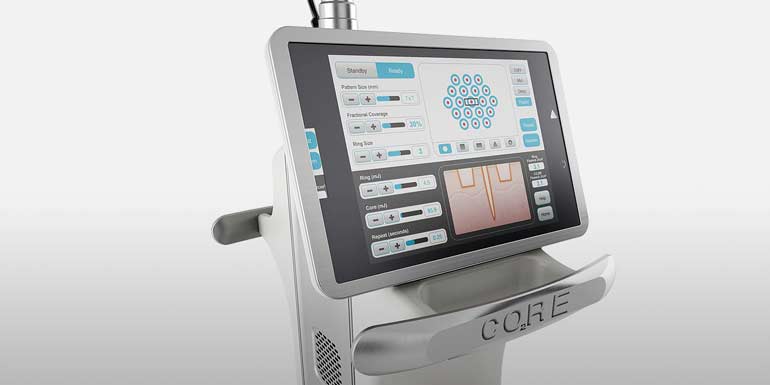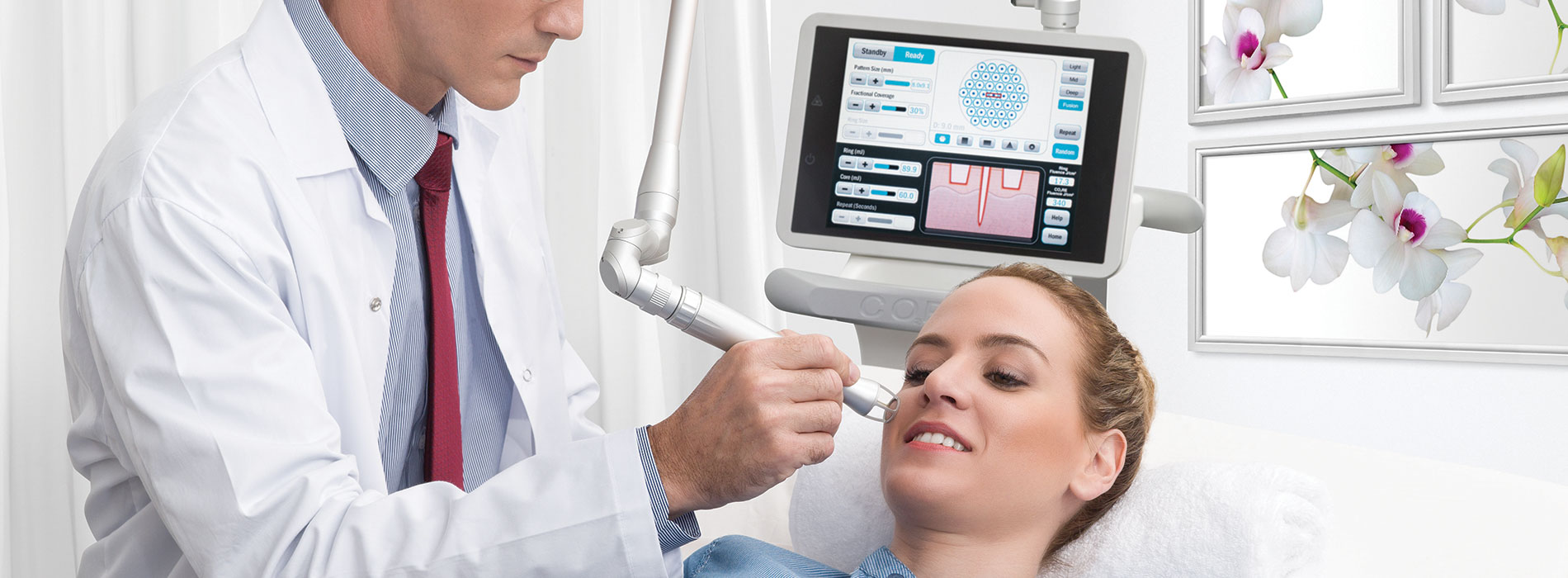
Scars come in many shapes, sizes and colours. Cosmetically speaking, the ideal scar is flat and nearly the same shade as the surrounding skin. Proper care may help increase the likelihood that you’ll end up with an unobtrusive scar after an injury, a surgery or an acne outbreak.
Unfortunately, we don’t always end up with the scar we hope for, even with diligent care. Some scars are striking due to their structure, colour or location, and they may be difficult to conceal with clothing or cosmetics.
Scar reduction treatments can help diminish the appearance of a scar that has healed poorly. At AF Aesthetics, we provide specific treatments for different types of scars.
Why Do Scars Form?
The appearance of a scar may seem usual, but in fact, it’s one of the body’s most natural processes.
When the skin is injured, it repairs itself by growing new tissue to fill in any gaps and cinch the wound together. That new tissue is made primarily of a protein called collagen. In many cases, the body produces the right amount of collagen to create a smooth, flat scar that fades nicely over time.
But sometimes, the healing process doesn’t end with the ideal aesthetic result. There may be an indented mark left behind, or discolouration or an overabundance of new collagen that projects above the skin surface. Scars like this may have done their job from a functional point of view — they closed the wound — but they leave much to be desired from a cosmetic standpoint.
Types of Scars
Scar reduction treatments vary depending on the type of scar, its location, its age and what caused it. The different types of scars include:
Acne Scars
Acne scars, which often have a pitted or sunken appearance, are common in young adults. It is important to treat acne promptly to reduce the risk of developing acne scars. Adults with acne scars may find that the marks become more noticeable as they age because the skin loses collagen and elasticity over time.
Acne scars are classified in different grades and are also subtyped according to their morphologic features. The initial assessment is critical since different treatment modalities are useful for different grades or subtypes. More invasive treatment modalities, for example, are not necessary to improve early-grade acne scars.
Depressed Scars
Depressed scars dip below the surface of the skin. There are many types of scars that fall into this category, including icepick scars, boxcar scars and rolling scars. Depressed scars are most common after chickenpox or severe acne clears. They can also form after skin trauma or surgery. Any type of depressed scar can become more prominent with age.
Depressed scars can be improved by adding volume to the “indented” area. There are several ways to do this, depending on the patient’s needs.
Hypertrophic Scars
Hypertrophic scars rise above the surface of the skin, creating a thick cluster of scar tissue that can be very prominent. These scars may be red, may itch or feel painful, and may widen over time. They can be hyperpigmented (darker in colour than the surrounding skin) or hypopigmented (lighter in colour than the surrounding skin). Hypertrophic scars may gradually flatten on their own, but the process can take years, and it is unlikely that they will ever completely flatten out.
Hypertrophic scars are often mistaken for keloid scars. A hypertrophic scar does not extend beyond the boundary of the original wound, while a keloid grows larger than the wound that caused the scar. Hypertrophic scars tend to be easier to treat than keloids.
Keloid Scars
Keloids are defined as overgrowth of scar tissue that extends beyond the limits of the initial tissue injury. Like hypertrophic scars, keloids rise above the surface of the skin. It is common and can be disfiguring. As a keloid develops, it may feel painful or itchy, and it can restrict your ability to move if it forms over a joint. A keloid can form months or even a year after the initial wound.
Keloid scars come in many different subtypes, and there are other medical conditions which mimic keloid scars. Therefore, the initial assessment is absolutely critical. Keloids will not go away without treatment, and conventional treatments such as intralesional injections are rarely helpful on their own.
Traumatic Scars
Accidents do happen and may lead to disfiguring scar formation. Initial wound closure and management is perhaps the most important aspect in traumatic scar management. Depending on the type of injury, these scars can result in contractures and discolouration, including traumatic tattoo, hyperpigmentation, hypopigmentation or redness. Each of these elements needs attention to improve these scars. Our team of experienced plastic surgeons and medical providers can provide you with a detailed assessment and appropriate management.

Surgical Scars
Surgical scars are generally better aesthetically than traumatic scars because they are created with a physician’s precise incision technique, thoughtful placement and adequate wound healing environments with proper dressings. However, abnormal wound healing after surgery can still result in prominent scars such as hypertrophic and keloid types.
Evidence suggests that early intervention of young scars may be beneficial by reducing proliferation and inducing early remodelling of scar formation. Additionally, cellular signalling pathways have been identified as possible causes of abnormal scar formation, and these can be modulated with various modalities to aid in post-surgical scar reduction.
We offer non-invasive, energy-based device treatments to help with post-surgical scar reduction. Please get in touch with the AF Aesthetics team to find out more.

Scar Treatment Options
Our Sydney scar treatment options include:
Laser Resurfacing
Laser treatments are an excellent option for reducing the visibility of a scar. In the hands of a properly trained medical professional, laser therapy can help:
- Prevent raised scars
- Minimise the appearance of existing raised scars
- Decrease surgical scarring
- Reduce hyperpigmentation in a scar
- Treat some depressed acne scars
- Reduce symptoms associated with scars, such as pain, hardness and itching
Laser scar removal can be done with an ablative laser, like our CO2RE, or a non-ablative laser, like our PicoWay. The difference in these procedures is the amount of downtime and the number of treatments it takes to see results. We can also use our Vbeam Prima laser to reduce redness in scars.
Microneedle Radiofrequency
Microneedling treatments encourage the body to make more collagen. To perform the procedure, a medical professional uses a needle-studded device to create tiny punctures in the skin. As the skin heals, it generates new tissue and produces new collagen fibres, which can help fill in acne scars and other depressed scars. Multiple sessions may be needed.
At AF Aesthetics, we use an advanced microneedling system called Secret RF. Secret RF offers all the benefits of traditional microneedling, plus the benefits of radiofrequency energy. Radiofrequency technology enhances the collagen stimulation that microneedling already provides, while also triggering a skin tightening effect that can further minimise the appearance of depressed scars.
For More Information About Scar Reduction, Contact AF Aesthetics Today
Scars are a natural part of the healing process, but they can be unwelcome, especially if they are located on the face or difficult to cover with makeup. Our Sydney scar removal patients come to us seeking help for all types of scars. We provide a wide variety of options for scar reduction, including surgical and non-surgical treatments, in a private and serene atmosphere.
Come and speak to us about your scar concerns. Get started by calling 02 8004 3323 today or completing the form here to book a consultation.

